Abstract
1. The biliary-faecal route of thyroxine excretion has been examined by means of thyroxine labelled with 131I in the thyroidectomized, thyroxine-maintained rat during cold exposure.
2. The rate of excretion of thyroxine into the faeces is raised in rats exposed to cold for 2 weeks and fed ad libitum on a high roughage diet.
3. When the faecal volumes of warm- and cold-exposed animals are made similar by controlling the roughage content of the diet the difference in their faecal thyroxine excretion rates is much reduced.
4. Warm- and cold-exposed rats eating the same amount of food excrete thyroxine into their faeces at similar rates.
5. Even when warm- and cold-exposed rats excrete thyroxine into their faeces at the same rate the cold-exposed animals still show a shorter half-life for blood thyroxine.
6. An acceleration of the rate of loss of thyroxine from the blood is demonstrable in fasting animals within 10 hr of exposure to cold.
7. Ligation of the bile-duct does not affect this acute response to cold.
8. The amount of thyroxine lost into the bile within the first 8 hr after intravenous injection is similar in warm- and cold-exposed animals. The clearance of thyroxine into the bile is however greater in the cold-exposed animal since the liver is working against a lower level of blood thyroxine.
9. An acceleration of the biliary-faecal route of thyroxine excretion is not the only process at work tending to reduce the biological half-life of thyroxine during cold exposure.
Full text
PDF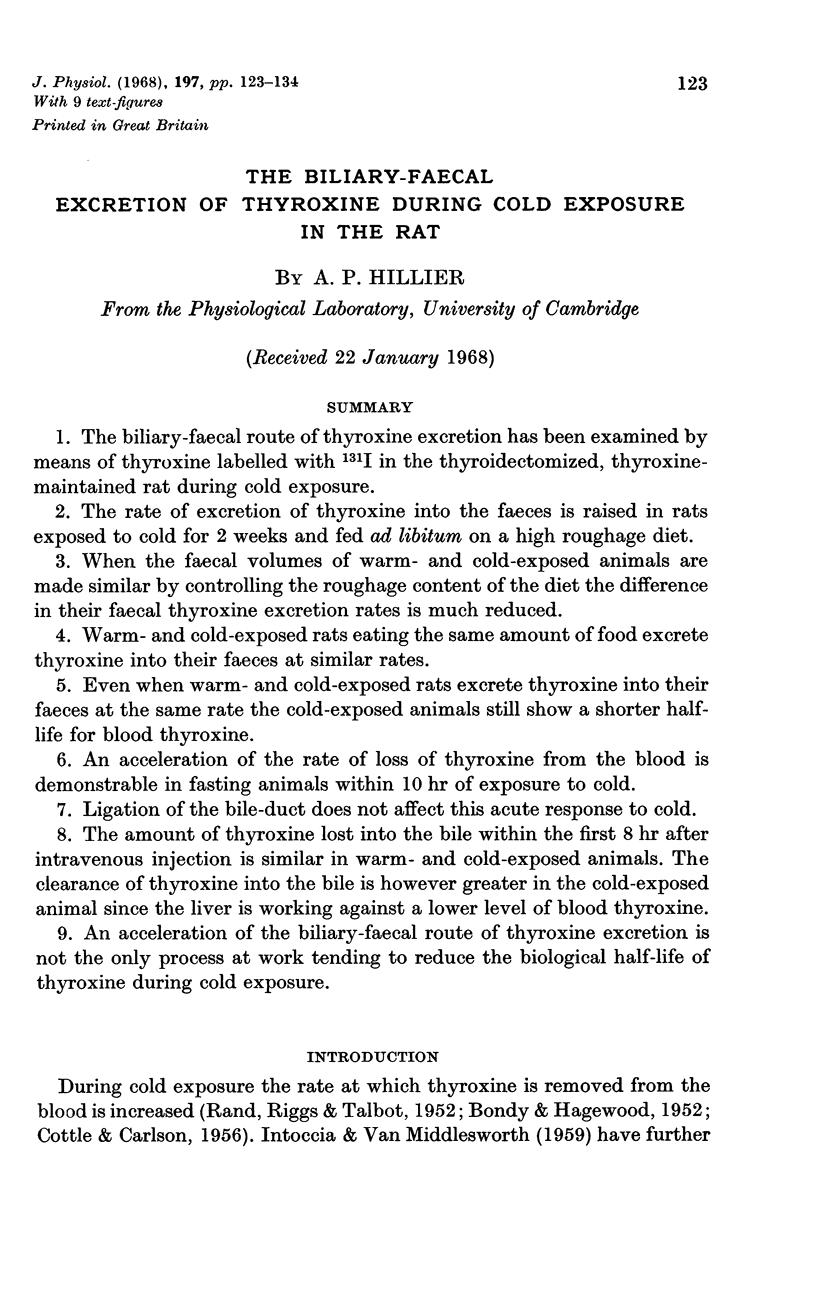
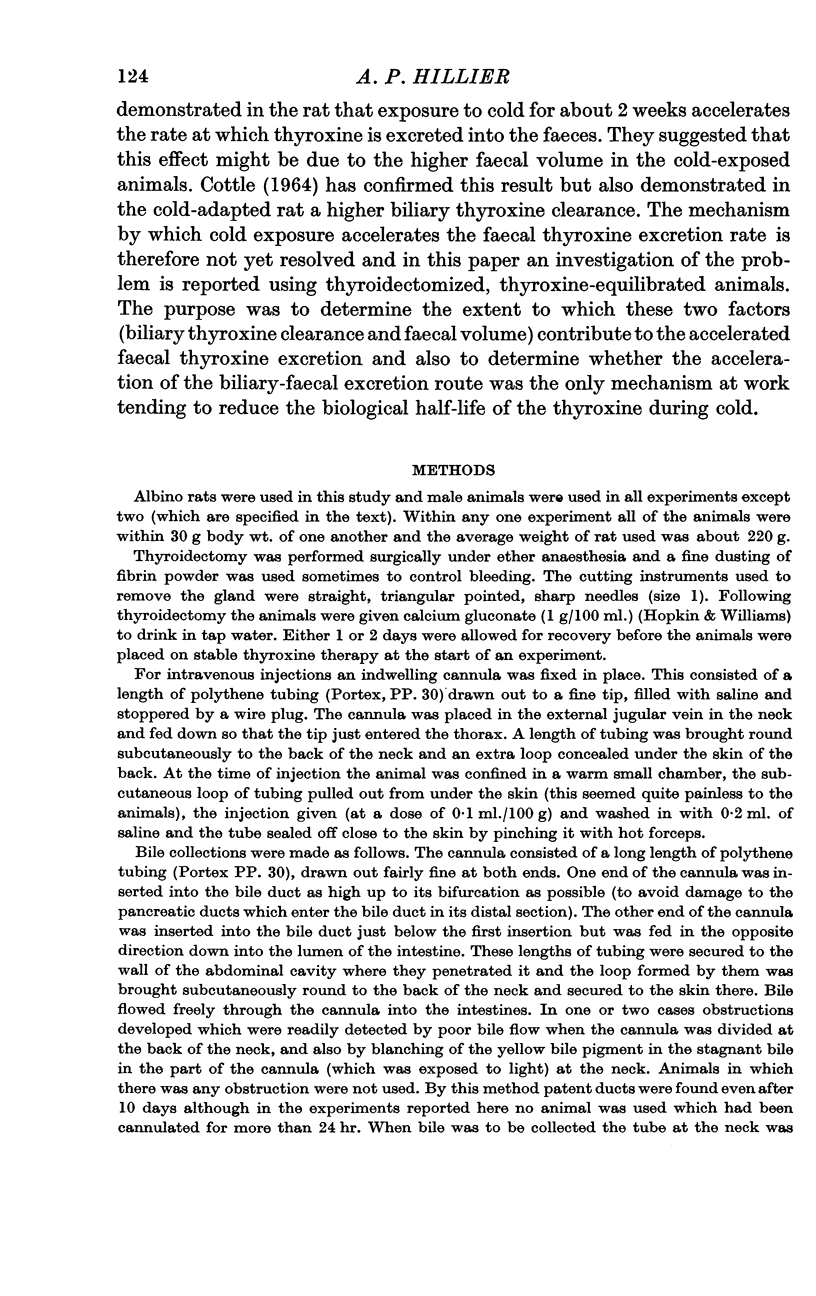
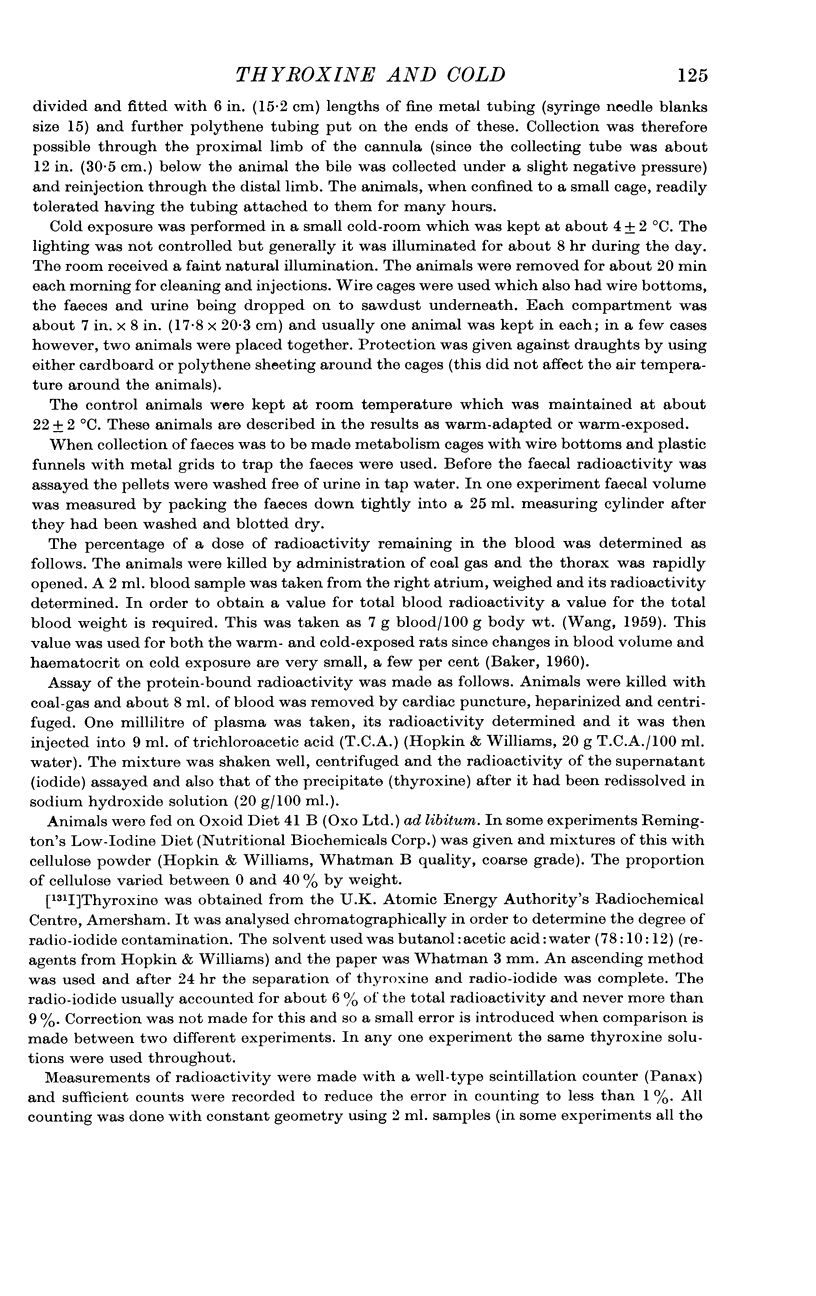
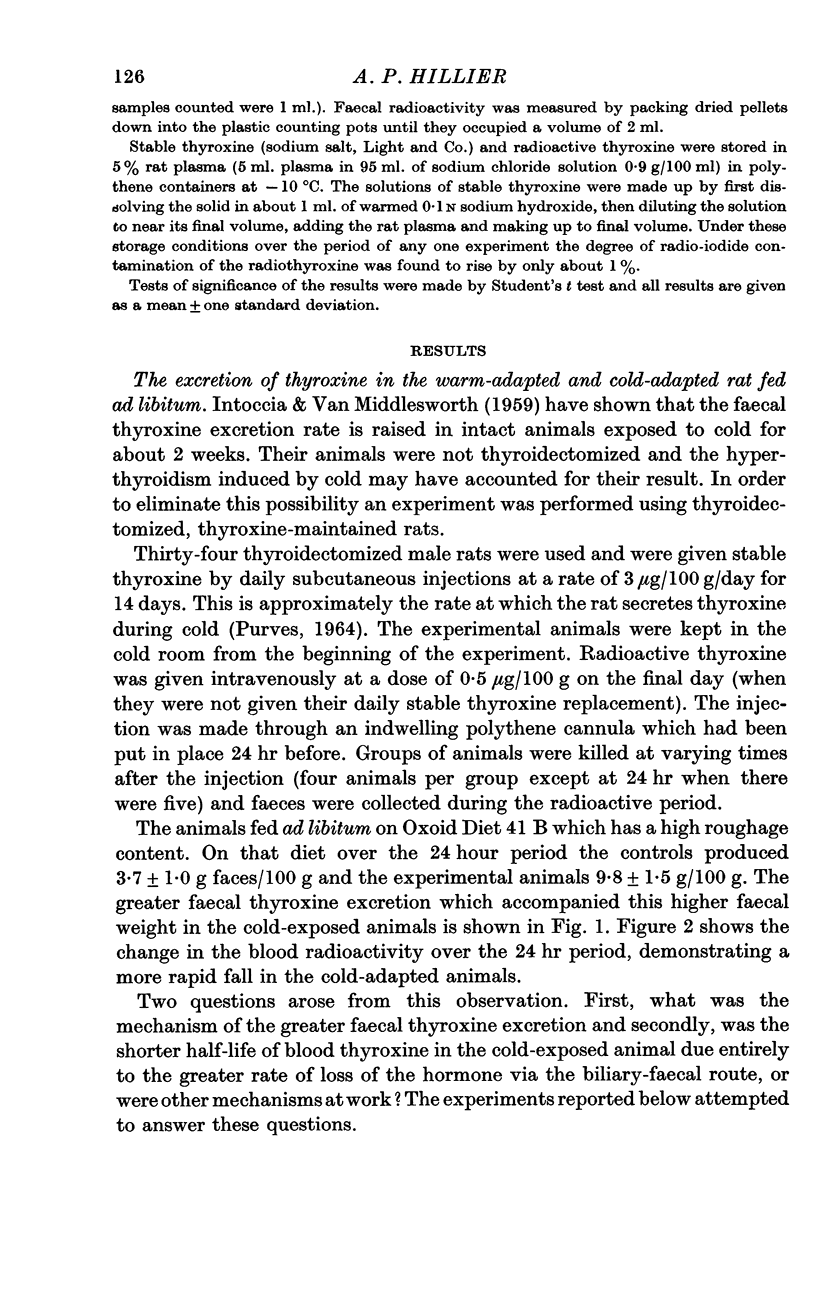
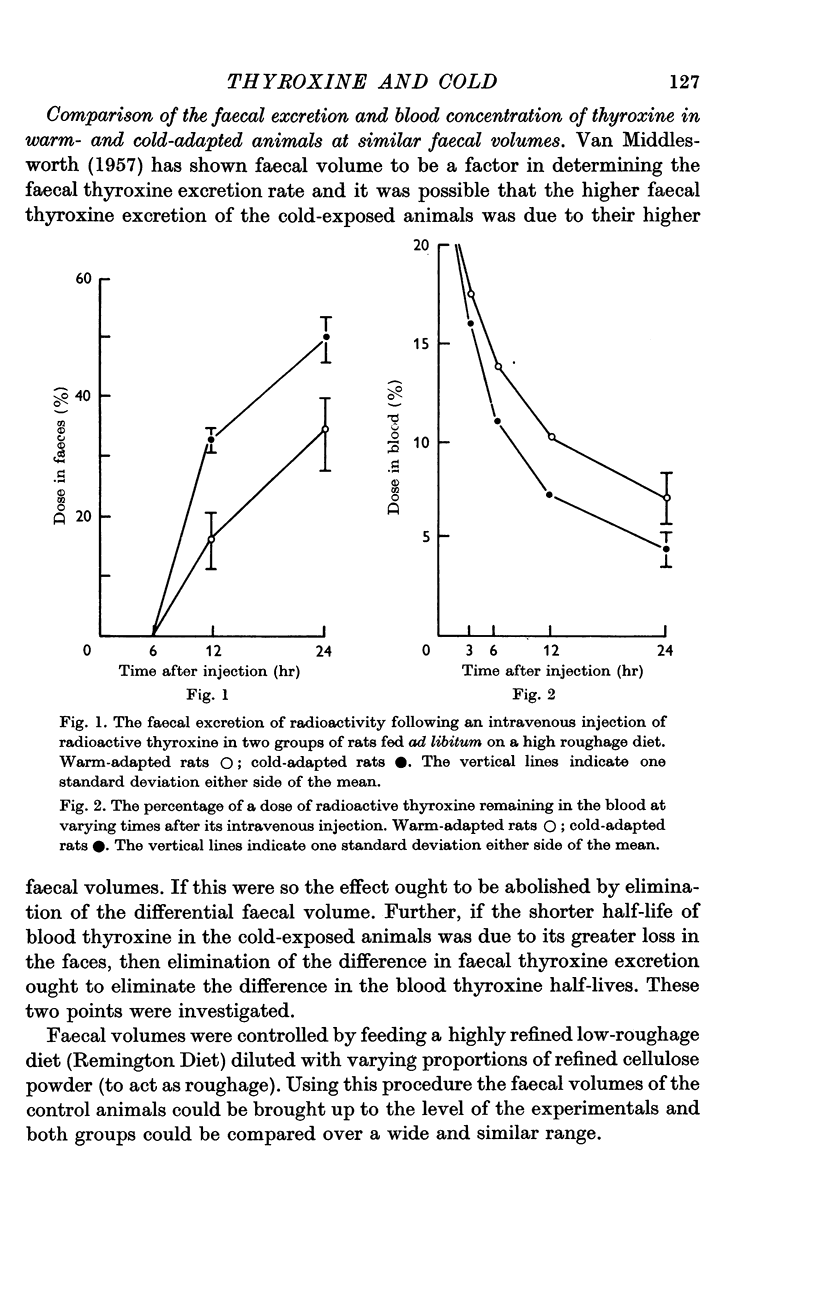
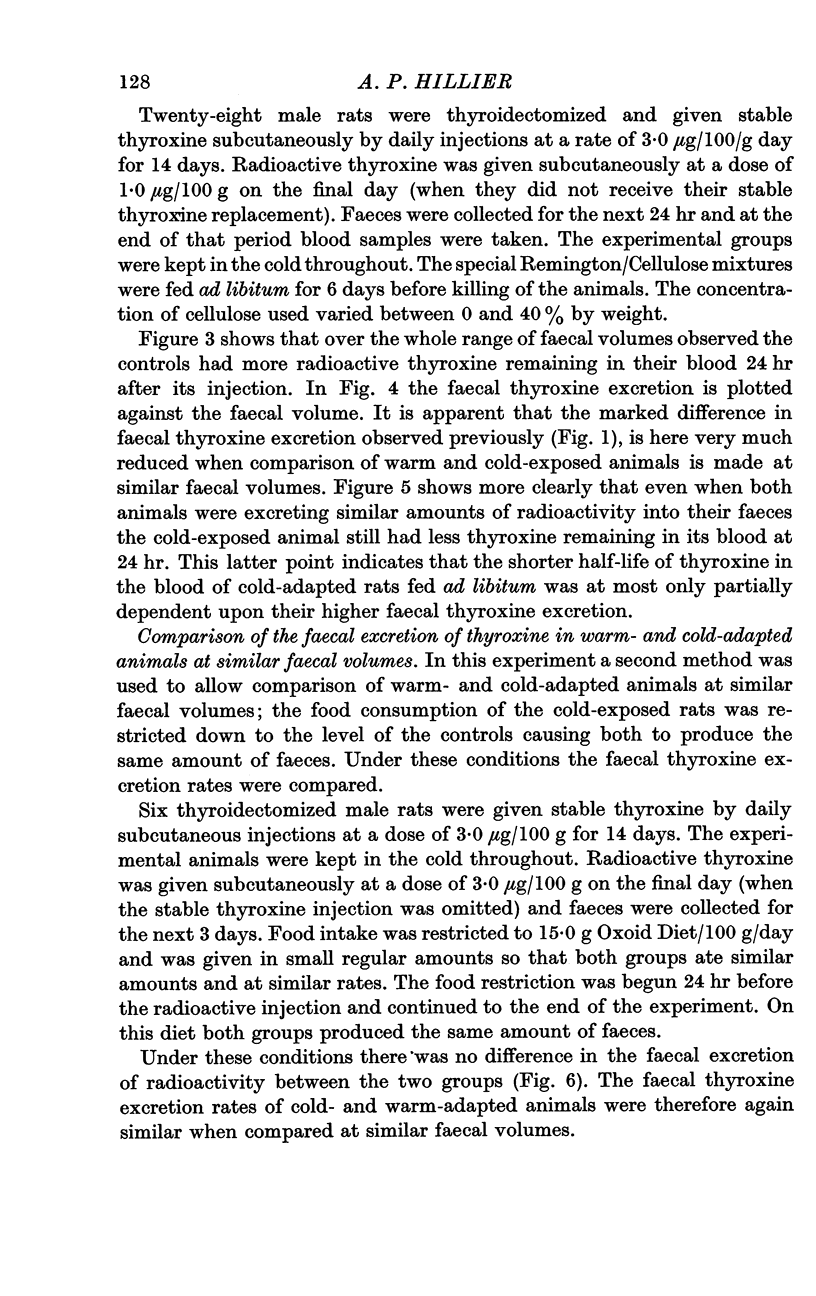
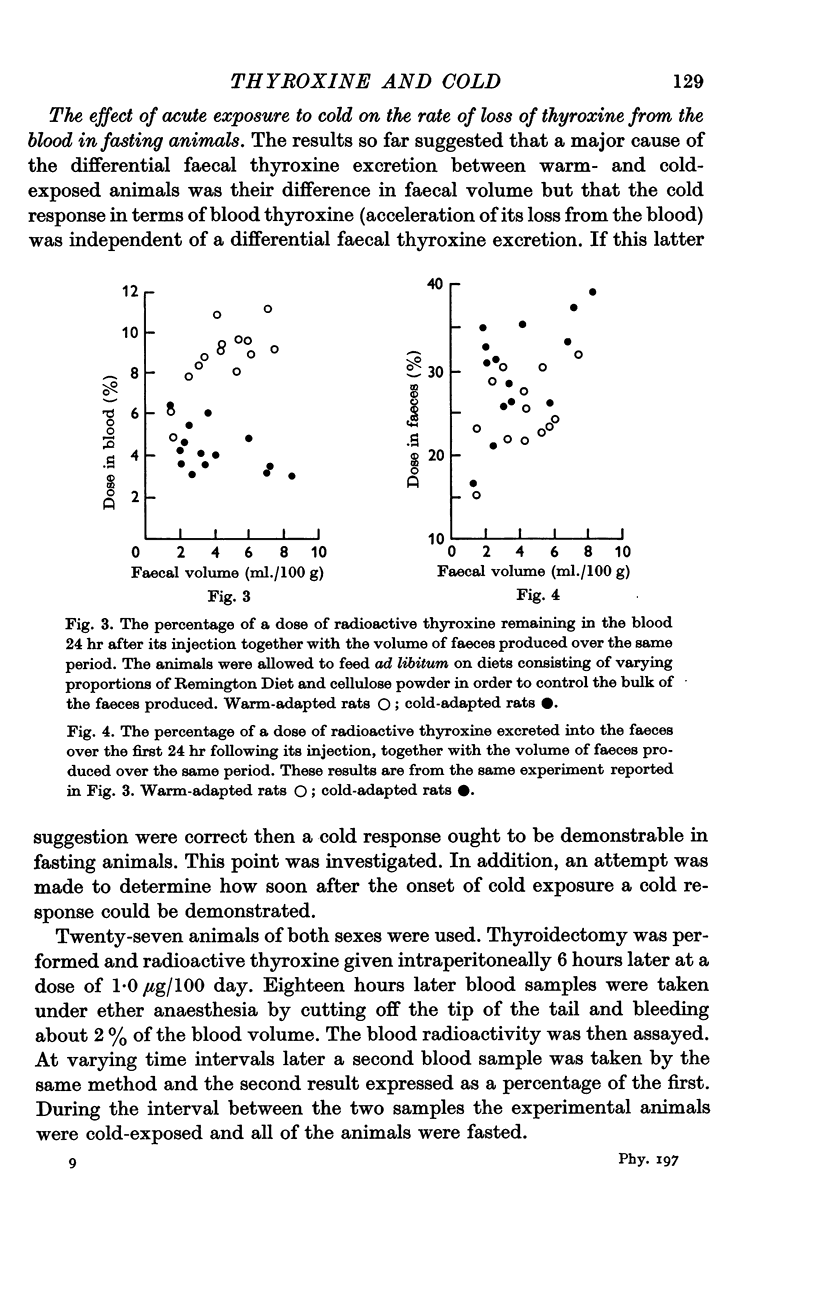
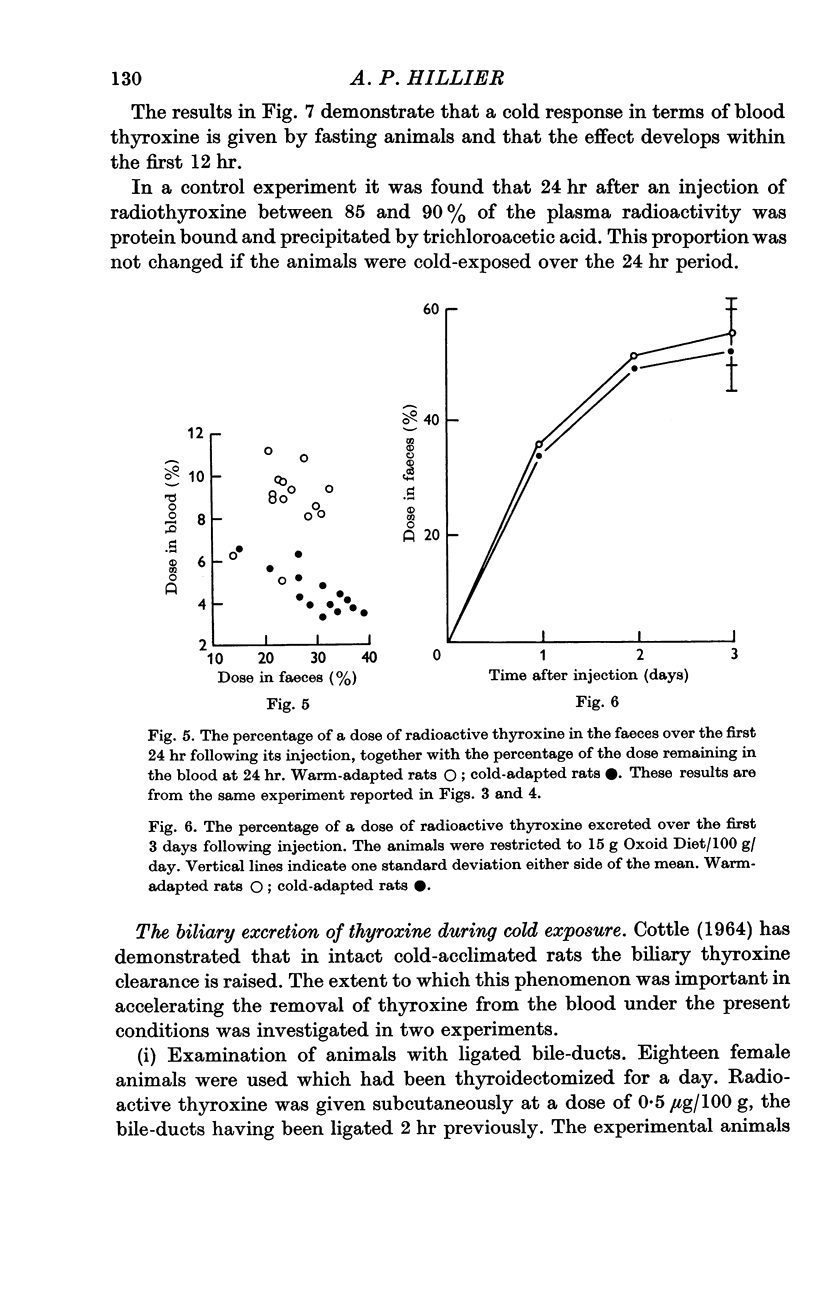

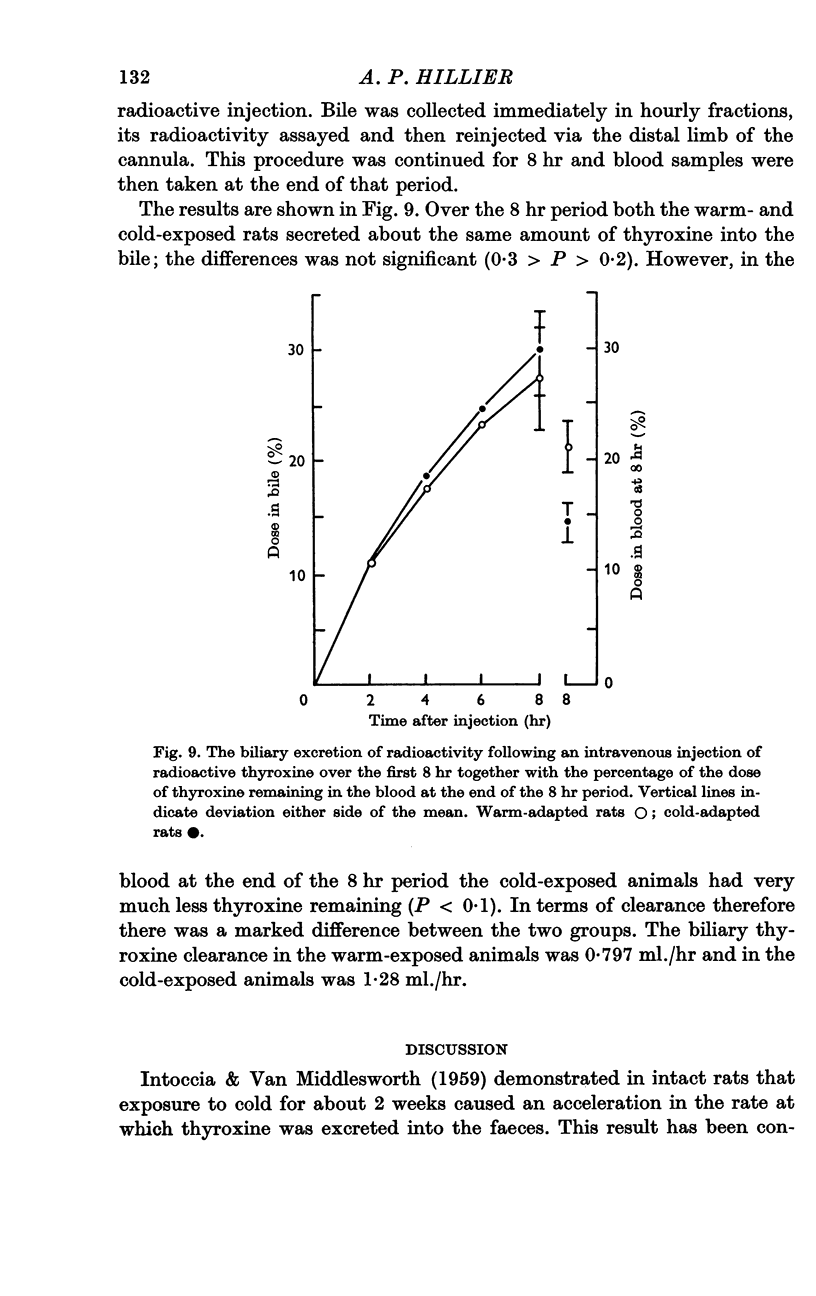
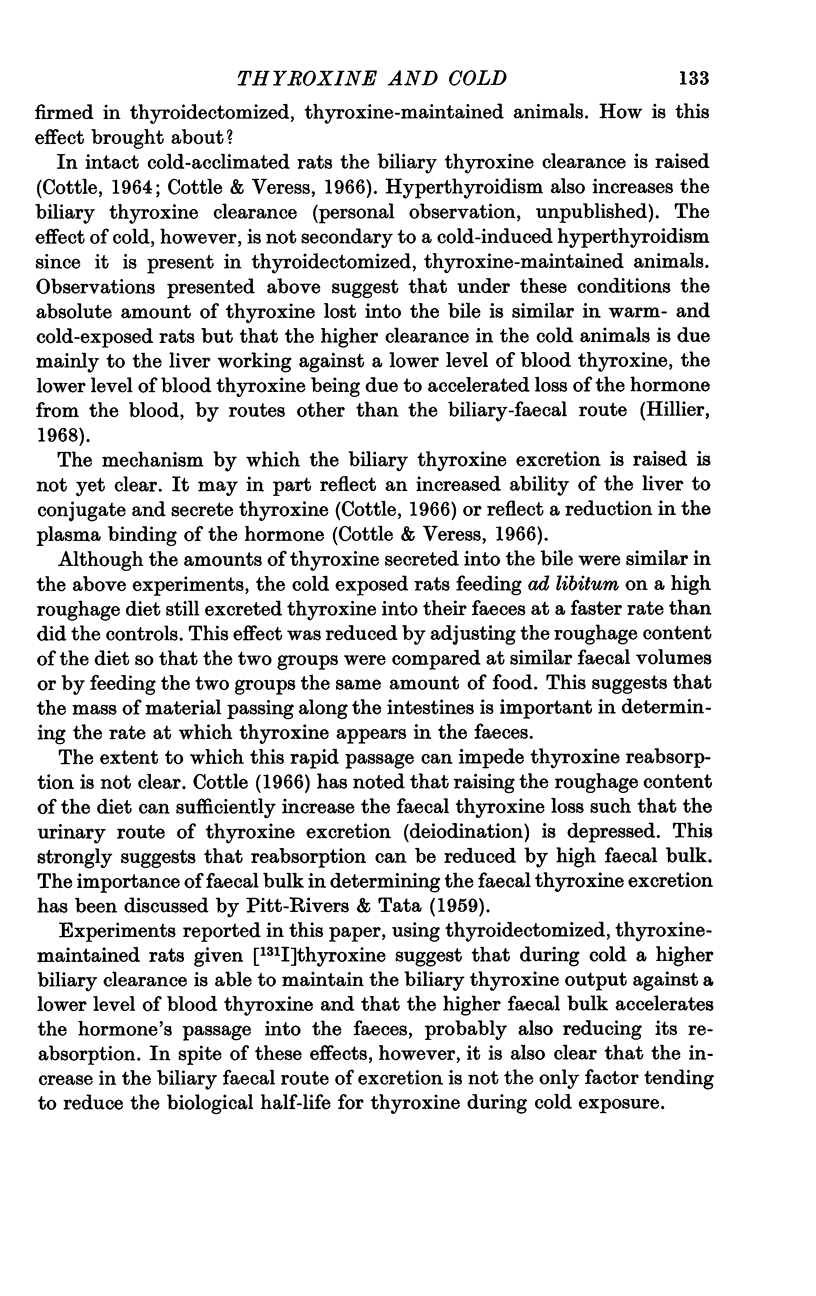
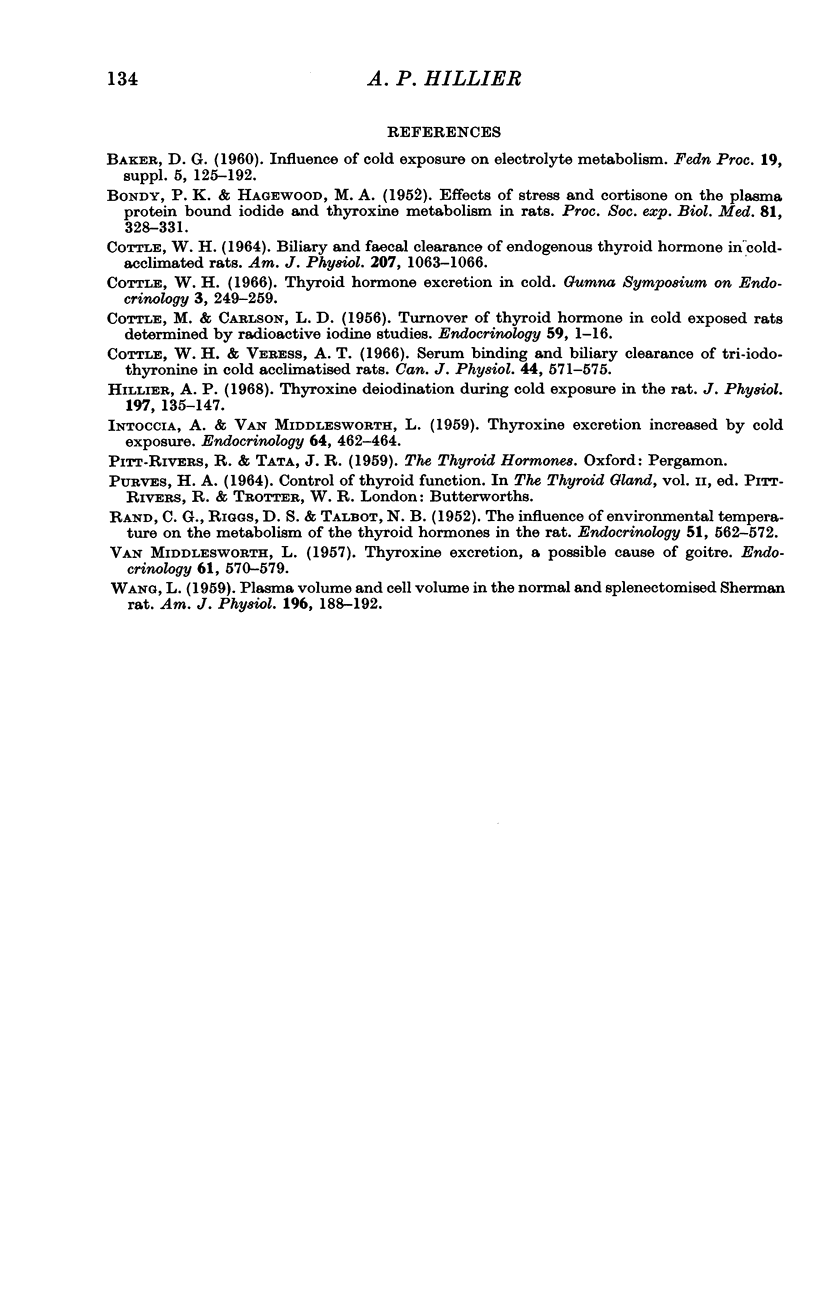
Selected References
These references are in PubMed. This may not be the complete list of references from this article.
- BONDY P. K., HAGEWOOD M. A. Effect of stress and cortisone on plasma protein-bound iodine and thyroxine metabolism in rats. Proc Soc Exp Biol Med. 1952 Oct;81(1):328–331. doi: 10.3181/00379727-81-19867. [DOI] [PubMed] [Google Scholar]
- COTTLE M., CARLSON L. D. Turnover of thyroid hormone in cold-exposed rats determined by radioactive iodine studies. Endocrinology. 1956 Jul;59(1):1–11. doi: 10.1210/endo-59-1-1. [DOI] [PubMed] [Google Scholar]
- COTTLE W. H. BILIARY AND FECAL CLEARANCE OF ENDOGENOUS THYROID HORMONE IN COLD-ACCLIMATED RATS. Am J Physiol. 1964 Nov;207:1063–1066. doi: 10.1152/ajplegacy.1964.207.5.1063. [DOI] [PubMed] [Google Scholar]
- Cottle W. H., Veress A. T. Serum binding and biliary clearance of triiodothyronine in cold-acclimated rats. Can J Physiol Pharmacol. 1966 Jul;44(4):571–574. doi: 10.1139/y66-072. [DOI] [PubMed] [Google Scholar]
- Hillier A. P. Thyroxine deiodination during cold exposure in the rat. J Physiol. 1968 Jul;197(1):135–147. doi: 10.1113/jphysiol.1968.sp008551. [DOI] [PMC free article] [PubMed] [Google Scholar]
- INTOCCIA A., VAN MIDDLESWORTH L. Thyroxine excretion increase by cold exposure. Endocrinology. 1959 Mar;64(3):462–464. doi: 10.1210/endo-64-3-462. [DOI] [PubMed] [Google Scholar]
- RAND C. G., RIGGS D. S., TALBOT N. B. The influence of environmental temperature on the metabolism of the thyroid hormone in the rat. Endocrinology. 1952 Dec;51(6):562–569. doi: 10.1210/endo-51-6-562. [DOI] [PubMed] [Google Scholar]
- VAN MIDDLESWORTH L. Thyroxine excretion, a possible cause of goiter. Endocrinology. 1957 Nov;61(5):570–573. doi: 10.1210/endo-61-5-570. [DOI] [PubMed] [Google Scholar]
- WANG L. Plasma volume, cell volume, total blood volume and F cells factor in the normal and splenectomized Sherman rat. Am J Physiol. 1959 Jan;196(1):188–192. doi: 10.1152/ajplegacy.1958.196.1.188. [DOI] [PubMed] [Google Scholar]


